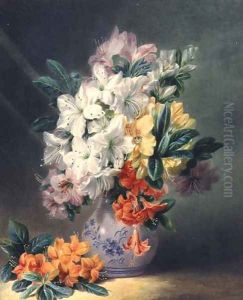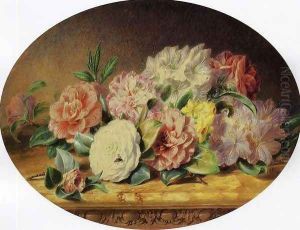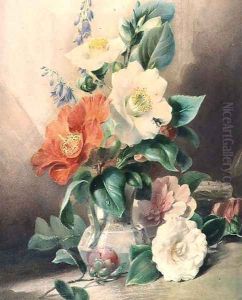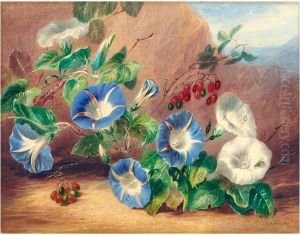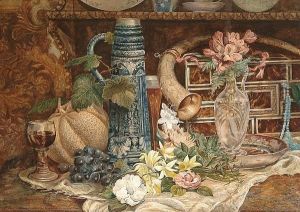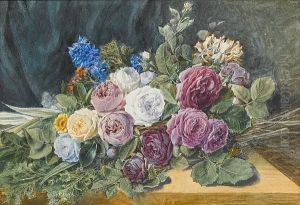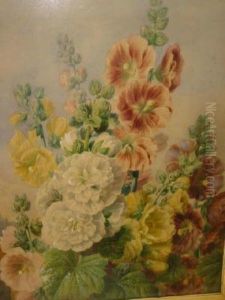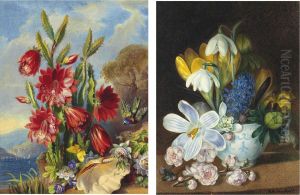Valentine Bartholomew Paintings
Valentine Bartholomew was a British artist born in 1799, known primarily for his botanical paintings and flower pieces. His work is characterized by its meticulous attention to detail and vibrant colors, which helped him to establish a reputation as one of the leading flower painters of his time.
Bartholomew was born in London, and he began his artistic training at an early age. He was initially apprenticed to a fan painter, which was a common practice at the time for artists to learn their craft. However, he soon developed a keen interest in botanical illustration. This interest was likely spurred by the growing popularity of botany as a science and the demand for detailed illustrations of plant species, both for scientific records and for the enjoyment of the burgeoning middle class.
In 1820, he became a member of the Society of British Artists, and in 1823, he was awarded a silver medal by the Society of Arts for a collection of his flower paintings. Bartholomew's talents were recognized by the highest levels of society; he received patronage from Queen Adelaide and Queen Victoria. He was appointed Flower Painter in Ordinary to Queen Adelaide and later served the same role for Queen Victoria.
Throughout his career, Bartholomew exhibited at the Royal Academy and the British Institution. His work was also shown at the Suffolk Street Gallery of the Society of British Artists, an institution that offered an alternative platform to the Royal Academy and where he served as vice-president for a period.
Bartholomew's paintings are primarily watercolors, a medium that allows for the delicate and precise renderings of plants. His art captures the transient beauty of flowers with an almost scientific accuracy, yet they also convey a sense of the aesthetic pleasure that can be derived from nature.
Valentine Bartholomew continued to paint until his death in 1879. Although he may not be as widely recognized today as some of his contemporaries, his contributions to botanical art remain significant, and his paintings can be found in various art collections, including those of botanical institutions and museums dedicated to natural history. Bartholomew's legacy lives on through his delicate and precise renderings of the floral world, which continue to capture the admiration of those who appreciate the intersection of art and nature.
